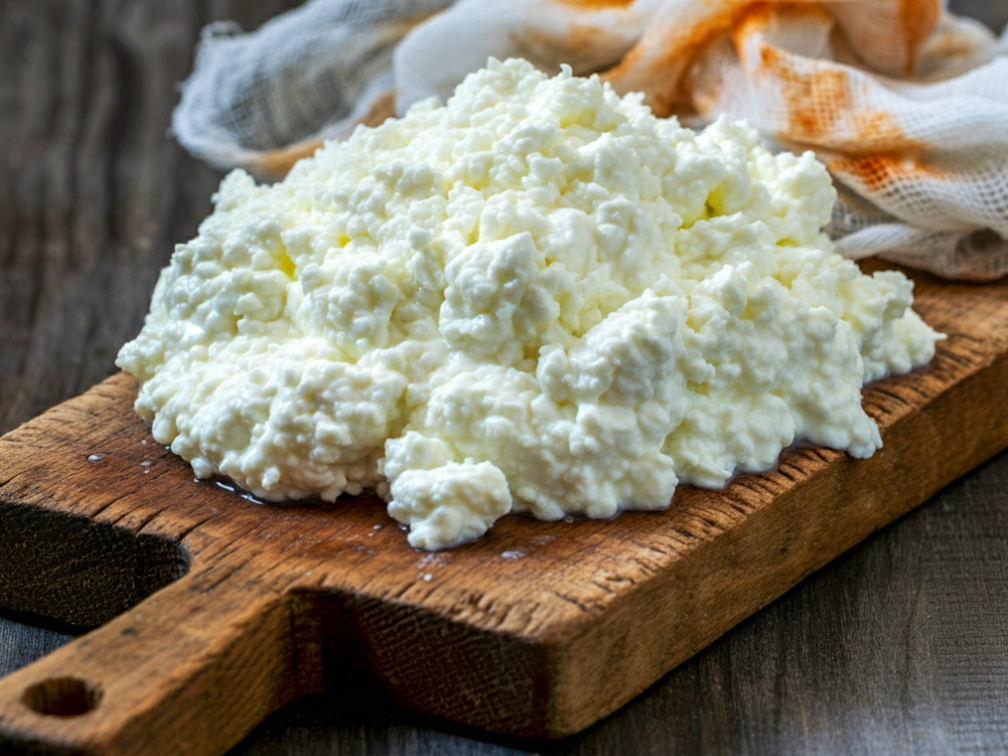Have you ever dreamt of crafting your own cheese? It might seem like a culinary feat reserved for experts, but with this simple quark recipe, you’ll discover that homemade cheese is within everyone’s reach!
Quark, also known as tvaroh in Czech and Slovak, is a fresh, versatile cheese that’s a staple in Central European cuisine. It boasts a mild, slightly tangy flavor and a creamy texture that lends itself to both sweet and savory dishes. While often enjoyed as a spread, quark is also a star ingredient in baked goods, desserts, and even savory fillings. Think of it as a blank canvas for your culinary creativity!
Why Make Your Own Quark?
While you can find quark in some specialty stores, making it at home offers a unique sense of satisfaction and allows you to control the quality of ingredients. Plus, this recipe is incredibly simple, requiring just two main ingredients and minimal effort.
What You’ll Need:
- Ingredients:
- 1 gallon of whole milk (preferably cream-top milk for extra richness)
- 1 cup of distilled white vinegar
- A little bit of whole yogurt or sour cream (optional, for adjusting consistency)
- Tools:
- Chef’s Knife & Cutting Board (for any optional additions)
- Large Sauce Pan or Medium Pot (about 6 QT)
- Wooden Spoon
- Food Thermometer
- Skimmer or Large Slotted Cooking Spoon
Let’s Get Started!
- Warm the Milk: Place the milk in a medium pot over medium heat. Stir occasionally with a wooden spoon and warm it to a lukewarm temperature (around 90°F). Don’t rush this step – slow and steady wins the race!
- Add the Vinegar: Once the milk is lukewarm, add the vinegar and continue stirring constantly for about 1-2 minutes until the mixture reaches a lukewarm temperature again. You’ll notice the magic happening as the quark starts to separate from the whey (the liquid part of the milk).
- The Importance of Lukewarm: It’s crucial to maintain a lukewarm temperature throughout the process. If the mixture gets too hot, the quark will start to dissolve back into the whey, and nobody wants that!
- Off the Heat and Separate: Remove the pot from the heat and let it sit for about 5 minutes, stirring occasionally. This allows the quark to fully separate from the whey, which will turn into a cloudy liquid with chunks of cheese floating in it.
- Scoop and Store: Using a skimmer or slotted spoon, gently scoop the quark into a food container. Don’t worry about getting all the whey out – a little bit won’t hurt! Cover the container with a lid and let it cool in the fridge for about 30 minutes.
- Time to Enjoy! Once your quark is chilled, it’s ready to be enjoyed. Spread it on bread, use it as a topping for fruit or granola, or incorporate it into your favorite recipes.
Tips and Tricks:
- Cream-Top Milk: While whole milk works perfectly well, using cream-top milk adds an extra layer of richness to your quark.
- Consistency is Key: If your quark turns out a bit too thick, you can gently stir in a small amount of whole yogurt or sour cream to achieve the desired consistency.
- Don’t Toss the Whey! While this recipe focuses on the quark, the leftover whey can be used in other recipes, such as smoothies or soups, for an added nutritional boost.
A World of Flavor Awaits:
The beauty of quark lies in its versatility. Here are just a few ideas to get you started:
- Sweet Treats: Use quark to make cheesecakes, cookies, pastries, and even ice cream. Its mild flavor pairs beautifully with fruits, chocolate, and spices.
- Savory Sensations: Incorporate quark into savory dishes like dips, spreads, fillings for pierogi or blintzes, and even as a topping for baked potatoes.
- Snack Attack: Enjoy quark as a healthy and satisfying snack. Mix it with fresh fruit, nuts, seeds, or a drizzle of honey for a quick and nutritious treat.
Homemade Goodness:
Making your own quark is a rewarding experience that allows you to connect with your food and explore new culinary horizons. So, grab your ingredients, embrace the simplicity of this recipe, and discover the delightful world of homemade quark!
Read less



Share
Click on the icons below to share "Title of the item to share"